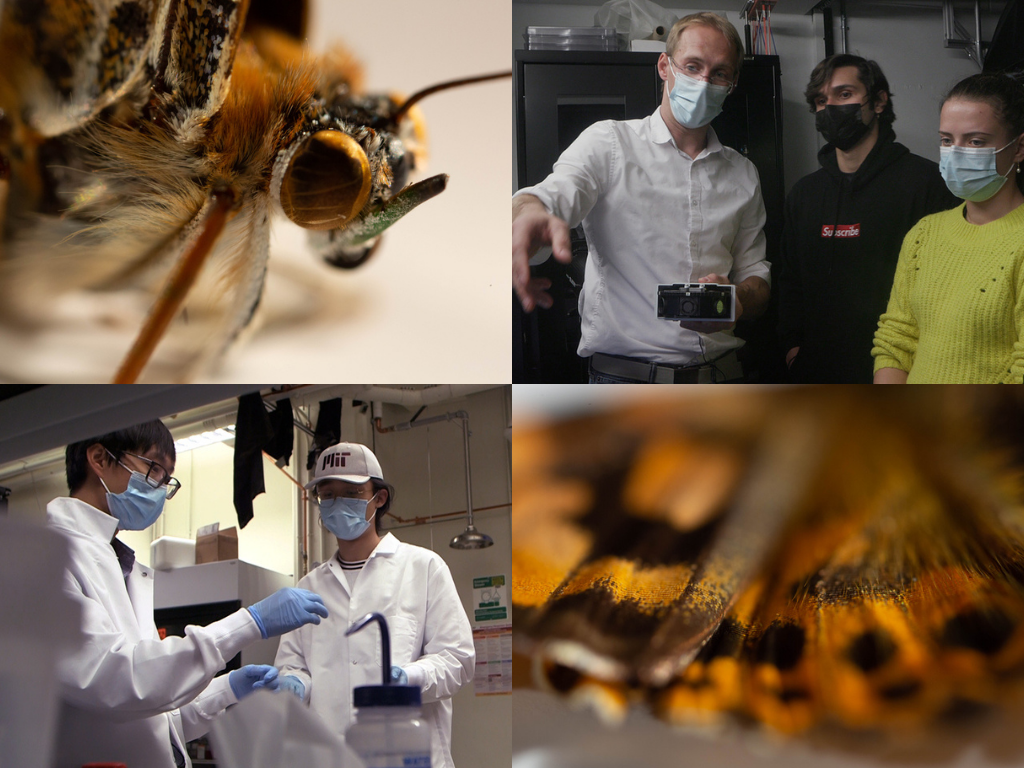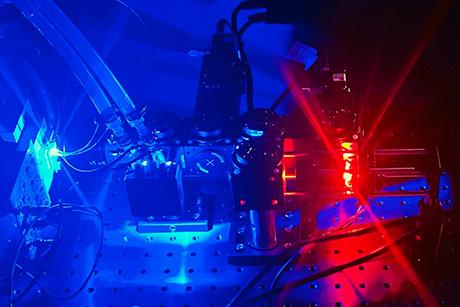MIT class journeys to fascinating places where mechanical engineering affects biology
Even for a second-year PhD student researching the mechanics of living cells, the influence of physical forces within the world of living things is a source of wonder.
“I did undergrad in engineering mechanics, and ever since I started to look at cells, the more I’ve found it fascinating to look at them as delicate ‘machines,’” says Haiqian Yang. “The cells are ‘smart’ for sure, but I believe they cannot escape physical laws. So where is the limit? Are there fundamental governing laws driving structure formation and multicellular dynamics just like those basic thermodynamic laws? These exciting questions motivate me.”
Last fall, Yang took class 2.788 (Mechanical Engineering and Design of Living Systems), which gave him a chance to step back and “learn the missing pieces that complete my whole picture of my field of study,” he says.
“Not only did this class teach me all the new, exciting topics going on in this field that I didn’t know before,” Yang says, “it also convinced me even more that there are huge opportunities where I can potentially make a difference.”
Understanding the mechanics of biology can take researchers in a huge variety of different directions, and provide students new to the concept with many opportunities to marvel. Intracellular mechanical forces can impact such processes as cancer metastasis, neurological pathology, and vascular disease. At the same time, the structure and mechanics of the cells on a butterfly’s wing or a bird feather can account not only for the creature’s color and shimmer, but for its survival when exposed to heat or moisture. And the geometry of cells that help renew the human intestine — their curvature and relative locations — account for much of their behavior in the body. Such examples are innumerable.
The study of such phenomena and their modeling could lead to technological solutions in fields from health care to building materials.
Ming Guo, the Class '54 Career Development Professor and associate professor of mechanical engineering at MIT, co-teaches 2.788 with Mathias Kolle, the Rockwell Career Development Professor and associate professor of mechanical engineering at MIT. Guo’s educational background is mainly in physics and engineering, but while studying for his PhD at Harvard University, he started taking cell biology and biophysics courses. Similarly, Kolle says, “I am a physicist by undergraduate and graduate training, turned materials scientist, mechanical engineer, and biology enthusiast by experience, exposure, and choices made out of curiosity.”
In 2017, the two professors started to plan the course.
“We had this idea,” says Guo, “that there isn’t any course teaching the engineering aspects of biological systems, while this field has been very quickly developing. So there was an urgent need to teach the newest ideas and understanding to students who might be interested in this broad topic.”
At the same time, research out of the National Science Foundation Center of Emerging Behavior of Integrated Cellular Systems, headed by Roger Kamm, Cecil and Ida Green Distinguished Professor of Biological and Mechanical Engineering, had illustrated that there was a need for such a class.
"The idea was that several universities would agree to each teach a course, make it available to the other institutions online, and that we would use these courses as a way of developing and disseminating pedagogical material on multicellular engineered living systems," Kamm says. "We had some success with that model, but it wasn’t until Ming and Mathias came on the scene that things really started to gel. The course they developed, with some encouragement from me, really pulled together all the different aspects of our center research, and packaged it into a course that they — with some help from my center staff — could offer across three institutions. The course has been, in my view, a huge success, and the class numbers have grown each year."
“Roger Kamm was a fervent supporter of our educational efforts right from the start,” says Kolle. “He was happy to act as a sounding board when we conceived the class and also is actively involved by setting the bigger framing of the field and research at MIT in his guest lecture, which he gives at the beginning of our class every time since we first started it in 2018.”
For students, the Mechanical Engineering and Design of Living Systems class presents untapped worlds to discover, due to the relative newness of the cross-disciplinary field.
“Ming and Mathias would highlight concepts or phenomena that really aren’t all that well understood — the point being that if you’re curious, this is something you could think about or look at,” says Gunnar Thompson, a second-year PhD student at the University of Illinois at Urbana-Champaign who took the class remotely. “Obviously, I wasn’t interested in every topic, but this enthusiasm for what’s new or undiscovered was inspiring to me.”
Thompson, whose research involves using biomaterials known as hydrogels to study the impact of physical and chemical factors on blood stem cells, represented one of two universities other than MIT that participate. Students from Georgia Tech also take the class.
Julie Shen, who is finishing her master’s degree in mechanical engineering at MIT and heading into a PhD, says the class allowed her to view living creatures from a new perspective. Shen does research on medical devices for the cardiovascular system, but her work has never been in a biology lab. In 2.788, she ran experiments with jellyfish.
“I didn’t think I’d get to do that in my life,” she says. “The class really made me curious about others topics in our field. There are so many cool things going on between mechanical engineering and biology, and the two professors were really enthusiastic about every topic they were teaching.”
The possible applications of the insights gleaned from studying the mechanical engineering forces at work in living systems are endless. Guo, referring to the potential for “using the engineering principles we learn from biology to build new biological machines to help mankind, improving our life quality or medical experiences,” points to his favorite discovery. It involves seeing how cells regulate their physical properties during tumor growth and invasion, such as the observation that softer, more fluid-swollen cells are more likely to form “invasive tips” that break away to spread elsewhere.
“This has been my favorite lately, as it highlights the extremely complex spatial and temporal interactions and regulations of individual cells in a developing tissue, yet reveals the simple and pretty physical principles that have a strong influence on biological development," Guo says. "This gives us hope to regulate biological behaviors in the future.”
Kolle, who points out that “biology is really good at controlling material structures,” says that in the biological optical materials he studies, “the control of material structure is unparalleled by human material synthesis approaches.” In general, he sees the engineering of tissues for the human body as a “big overarching challenge — actually, probably better-said, a myriad of different challenges.” Such tissues could “either encourage our body to work well where it needs that encouragement or to provide replacements for failing parts.”
“There is still so much that we don’t know about the complexity of the human body and life in general and how all the different parts play together when they work well, or don’t when they fail in some way or the other.”
Asked about his favorite discovery, Kolle lists the research projects his students are pursuing — Ben Miller’s color-dynamic materials, Anthony McDougal's insights into butterfly scale formations, the work that both Sara Nagelberg and Hannah Feldstein have done on fluid micro lenses, and Joseph Sandt’s implementation of colorimetric bandage pressure sensors.
“My very own favorite discovery at MIT is that the best things coming out of my lab are growing in the minds of my students,” Kolle says.
According to everyone involved, the excitement and potential of such research comes through loud and strong in 2.788.
“The class definitely helped me to better understand the current state of biological mechanics research,” says mechanical engineering senior Joseph Bonavia, “and helped me to appreciate it more.”



